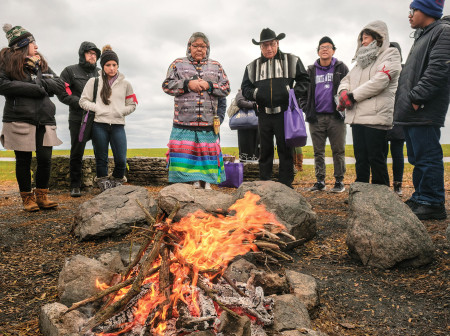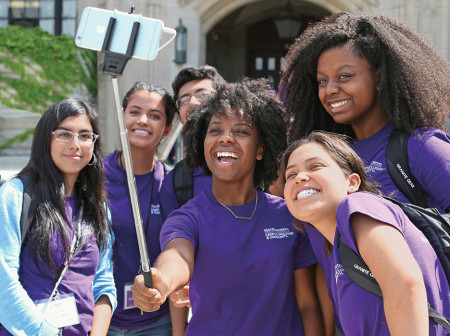Northwestern’s student-run radio station, WNUR 89.3, turns 72 this year. In spring 1950 the station began broadcasting using a 10-watt transmitter with a range of 5 to 7 miles beyond Northwestern’s campus. By 1975 WNUR had acquired a 7,200-watt transmitter, extending its reach to a wider Chicago-area audience.
In the early 1970s WNUR introduced groundbreaking programming through Fillet of Soul and BlackNUss, shows that celebrated Black culture and provided outlets for discussion. In 1972 the station hosted a discussion on race relations at Northwestern; jazz and funk music shows, such as Love from the Sun; and news and information programs, such as Third World Report. Today the station serves as a forum for underrepresented music and ideas while offering students the chance to hone their broadcasting skills.




Reader Responses
In your winter edition you have a picture on page 15 [“Turn Up the Radio,” ’Cat Tales] with the caption, “A WNUR DJ in 1969.” That’s Amos C. Brown III ’72, who was a vital part of WNUR and the Northwestern student government from 1968 to 1972.
I worked at WNUR for three years with Amos and many other great students at that time of political unrest on campus. Amos had at least one radio show every semester of his Northwestern career and served on the WNUR leadership team continually during that time.
After graduation, Amos established a strong radio presence in Indianapolis, especially in the broadcasting and discussion of civil rights policies, city government and other topics especially of interest to the Black community.
Amos died suddenly in November 2015 while visiting his parents in Chicago. He was a great friend and a fine radio journalist.
—Patrice Pavka Fischer '72, Palm Harbor, Fla., via Northwestern Magazine
I started as a WNUR DJ and as a producer of Third World Report and later First World Report in 1978. We all had a wonderful sense of the legacy of Amos Brown and those pioneers who payed the way for us. What a wonderful time it was to be behind the mic and toiling in the production studio in the basement of Swift Hall. Go NU!
—Vincent Williams '82, Las Vegas
As a producer of the BlackNuss radio strip in the mid-70s, I was proud to be a part of a cohort of news and music curators that were somehow able to translate the Afro-surreal nature of being an NU student into a creative narrative that, in the pre-House, pre–hip hop era, embraced everything from the Black Arts aesthetic of the previous generation while trailblazing decidedly visionary Afro-futurist pathways that included everything from Miles Davis to George Clinton, Hendrix, Sun Ra and even Bob Marley.
—Herb Taylor '78, Washington, D.C., via Northwestern Magazine
As a WNUR DJ myself for all four years I was at Northwestern — including being the news and special events director in the spring of 1970 when we went 24/7 all-news after the Kent State killings — I was happy to see the highlighted column on page 15 of the winter 2022 edition talking about the station that started me in my own ongoing broadcasting career. And I thought you might like to know that the picture you chose of "A WNUR DJ in 1969" is none other Amos C. Brown III, a key figure at the station all the years I was there and who also ended up having a longtime radio career right up until his death a few years ago. (Amos was also the first speaker of the ASG Forum.) Based on the picture of the classic RCA microphone, it looks like that was taken in our original home studios in the basement of Swift Hall. Good times and good memories.
—Ken Kurtis '73, Los Angeles, via Northwestern Magazine
No one has commented on this page yet.
Submit a Response